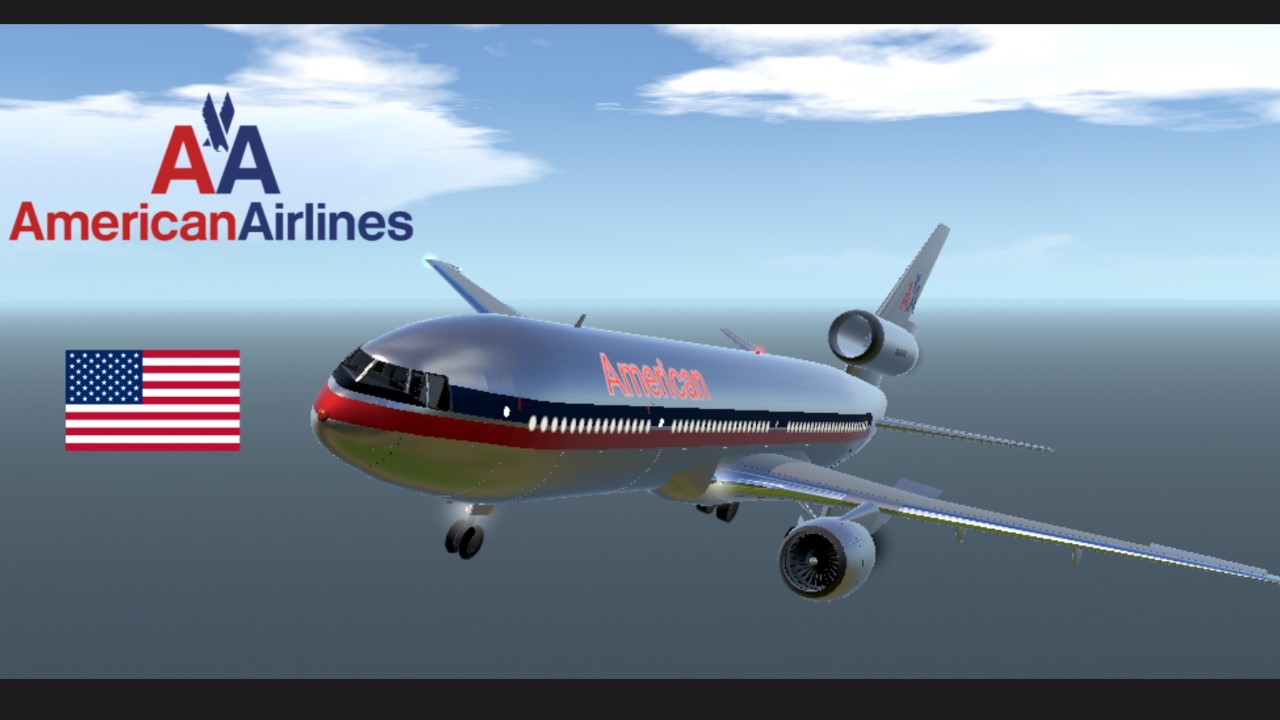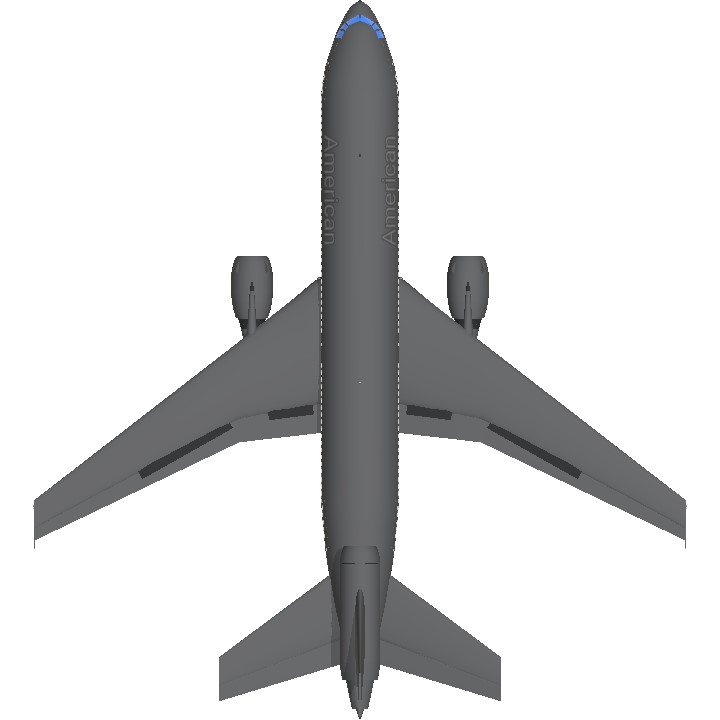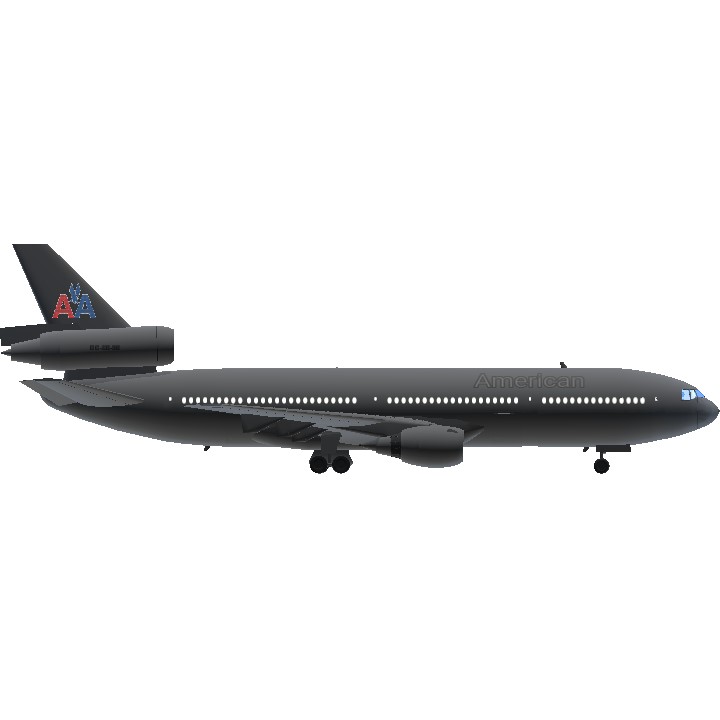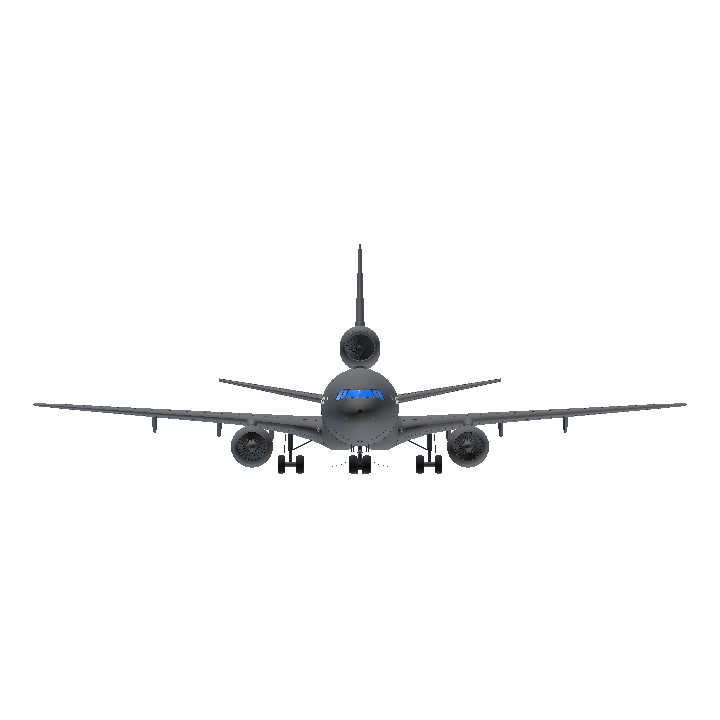Annedzsrue's DC-10-30 With the American Airlines Livery!
Representing an American dream! for years American Airlines has dreamed of having a quiet plane with virtually smokeless engines as comfortable as a 747 but able to land at almost any commerical airport, introducing the new DC-10 Luxury Liner! with a lounge and coach and first class, American DC-10, all passengers get the best at everything!
INFO:
The McDonnell Douglas DC-10 is an American trijet wide-body aircraft manufactured by McDonnell Douglas. The DC-10 was intended to succeed the DC-8 for long-range flights. It first flew on August 29, 1970; it was introduced on August 5, 1971, by American Airlines.
DC-10 / MD-10
The trijet has two turbofans on underwing pylons and a third one at the base of the vertical stabilizer. The twin-aisle layout has a typical seating for 270 in two classes. The initial DC-10-10 had a 3,500 nmi (6,500 km) range for transcontinental flights. The DC-10-15 had more powerful engines for hot and high airports. The DC-10-30 and -40 models (with a third main landing gear leg to support higher weights) each had intercontinental ranges of up to 5,200 nmi (9,600 km). The KC-10 Extender (based on the DC-10-30) is a tanker aircraft operated primarily by the United States Air Force.
Early operations of the DC-10 were afflicted by its poor safety record, which was partially attributable to a design flaw in the original cargo doors that caused multiple incidents, including fatalities. Following the American Airlines Flight 191 crash (the deadliest aviation accident in US history), the US Federal Aviation Administration (FAA) temporarily banned all DC-10s from U.S. airspace in June 1979. In August 1983, McDonnell Douglas announced that production would end due to a lack of orders, as it had a widespread public apprehension after the 1979 crash and a poor fuel economy reputation. As design flaws were rectified and fleet hours increased, the DC-10 achieved a long term safety record that was comparable to similar era passenger jets.
Production ended in 1989, with 386 delivered to airlines along with 60 KC-10 tankers. The DC-10 had outsold the similar Lockheed L-1011 TriStar. It was succeeded by the lengthened, heavier McDonnell Douglas MD-11. After merging with McDonnell Douglas in 1997, Boeing upgraded many in-service DC-10s as the MD-10 with a glass cockpit that eliminated the need for a flight engineer. In February 2014, the DC-10 made its last commercial passenger flight. Cargo airlines continue to operate a small number as freighters. The Orbis Flying Eye Hospital is a DC-10 adapted for eye surgery. A few DC-10s have been converted for aerial firefighting use. Some DC-10s are on display, while other retired aircraft are in storage.
INCIDENT
American Airlines Flight 191 was a regularly scheduled domestic passenger flight in the United States from O'Hare International Airport in Chicago, Illinois, to Los Angeles International Airport in California. On the afternoon of May 25, 1979, the McDonnell Douglas DC-10-10 operating this flight was taking off from runway 32R at O'Hare when its left engine detached from the wing, causing a loss of control, and the aircraft crashed less than one mile (1.6 km) from the end of the runway. All 258 passengers and 13 crew on board were killed, along with two people on the ground. With 273 fatalities, it is the deadliest aviation accident to have occurred in the United States.[3][4][5]
The National Transportation Safety Board (NTSB) found that as the aircraft was beginning its takeoff rotation, engine number one (the left engine) separated from the left wing, flipping over the top of the wing and landing on the runway. As the engine separated from the aircraft, it severed hydraulic lines that lock the wing's leading-edge slats in place and damaged a 3-foot (0.9 m) section of the left wing's leading edge. Aerodynamic forces acting on the wing resulted in an uncommanded retraction of the outboard slats. As the aircraft began to climb, the damaged left wing—with no engine—produced far less lift than the right wing, which had its slats still deployed and its engine providing full takeoff thrust. The disrupted and unbalanced aerodynamics of the aircraft caused it to roll abruptly to the left until it was partially inverted, reaching a bank angle of 112°, before crashing in an open field by a trailer park near the end of the runway. The engine separation was attributed to damage to the pylon structure holding the engine to the wing, caused by improper maintenance procedures at American Airlines.
Source: Wikipedia
AAL191 IMAGES


V2 Here
CONTROLS [AG6 included]
AG1:...................Simplified Engine Startup
AG2:...................Reverser
AG3:...................Mouse Steering
AG4:...................Emergency Slides
AG5:...................Simple Autopilot
AG6:...................Detatch Left Engine
AG7:...................Passenger Doors
AG8:...................Luggage Doors
LandingGear:....Landing Gear & Landing Lights
Trim...................Trim
VTOL..................FLAPS
Rest in peace to the souls on board....
Specifications
General Characteristics
- Predecessor Douglas DC-10-30 Malaysian Airline System MAS
- Successors 2 airplane(s)
- Created On Android
- Wingspan 164.6ft (50.2m)
- Length 181.5ft (55.3m)
- Height 58.5ft (17.8m)
- Empty Weight 279,613lbs (126,830kg)
- Loaded Weight 455,733lbs (206,717kg)
Performance
- Power/Weight Ratio 1.069
- Wing Loading 94.8lbs/ft2 (462.7kg/m2)
- Wing Area 4,808.8ft2 (446.8m2)
- Drag Points 23147
Parts
- Number of Parts 683
- Control Surfaces 11
- Performance Cost 4,502





BTW this was my back build, i came back.
@Pooplee you need to press ag1
@Pooplee
@Pooplee I'll fix it.
It doesn't start well the engines won't start